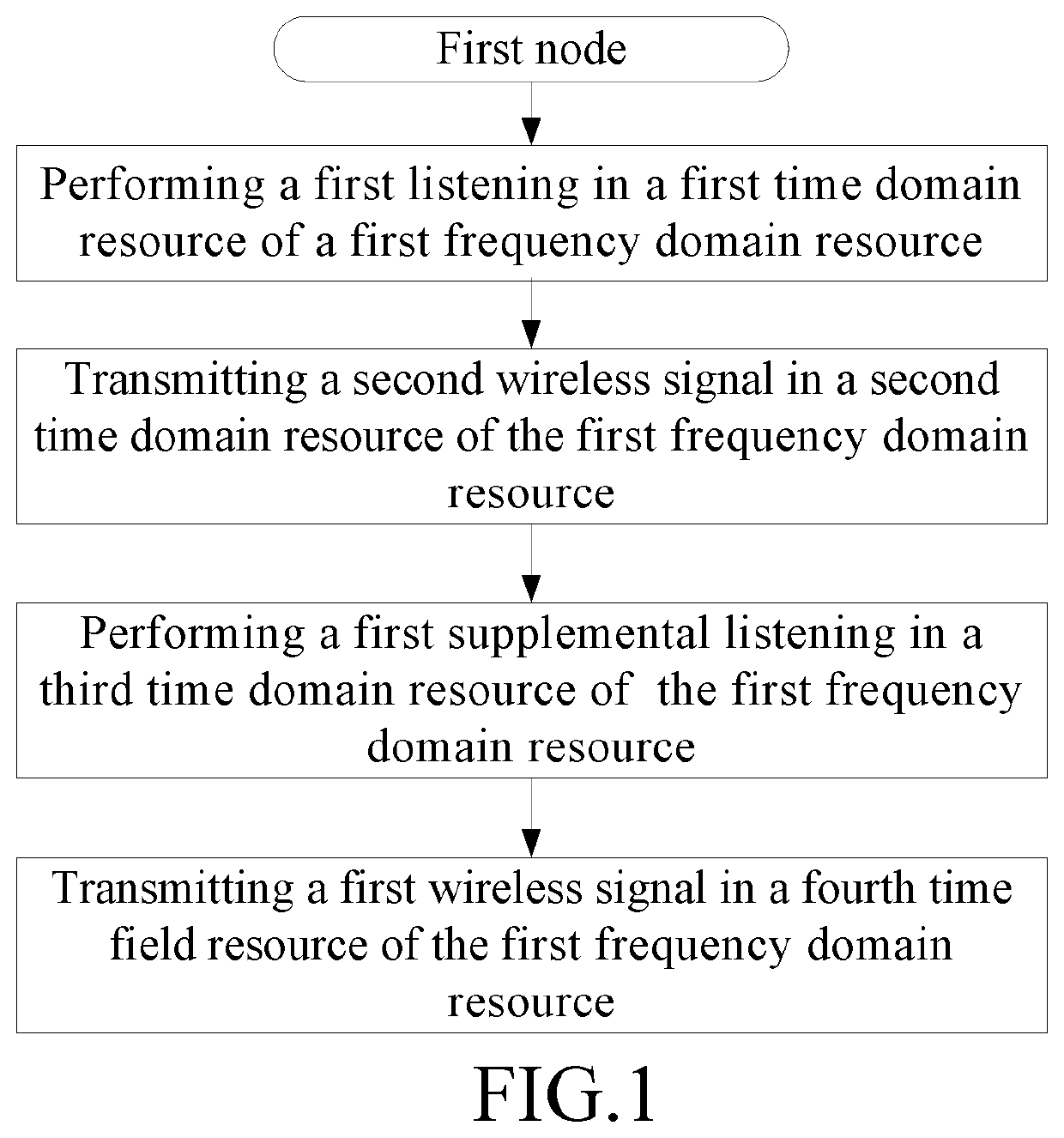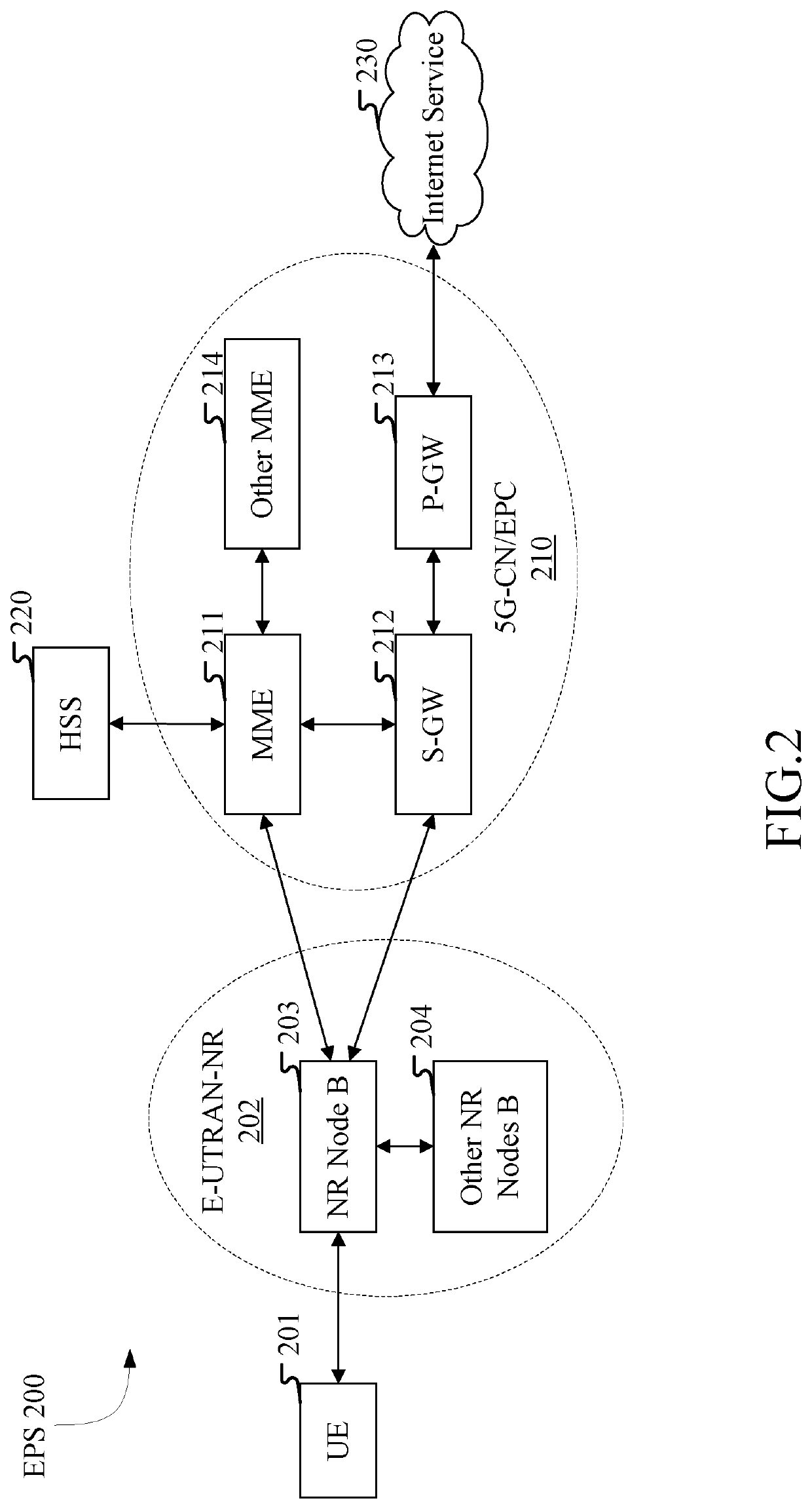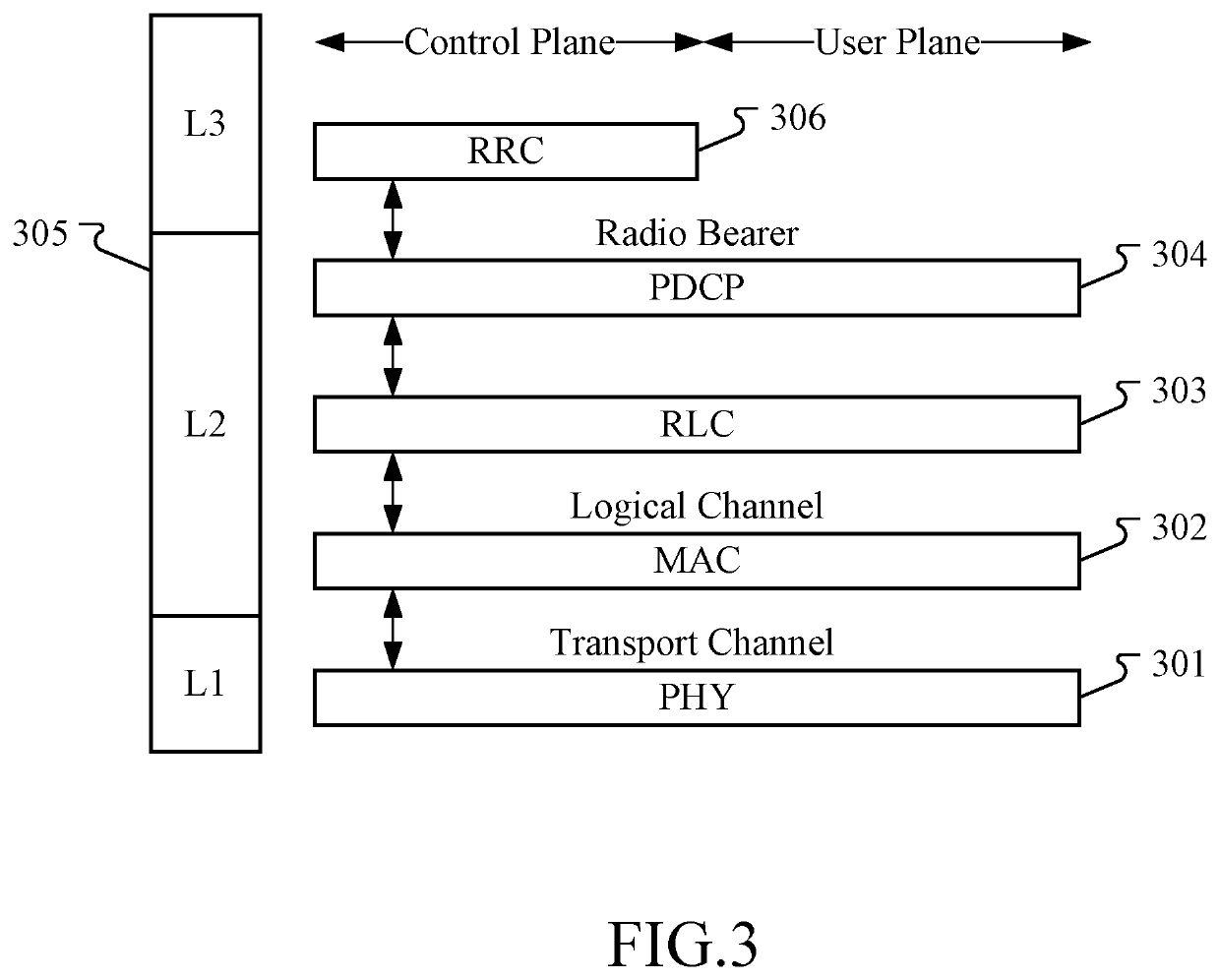Method and device for wireless communication in a first node and base station
a wireless communication and wireless communication technology, applied in the field of wireless communication systems, can solve problems such as the problem of lbt to be solved, and achieve the effects of reducing the delay required by lbt, improving transmission efficiency, and increasing transmission opportunities
- Summary
- Abstract
- Description
- Claims
- Application Information
AI Technical Summary
Benefits of technology
Problems solved by technology
Method used
Image
Examples
embodiment 1
[0075]Embodiment 1 illustrates a flowchart of a first node, as shown in FIG. 1.
[0076]In Embodiment 1, the first node first performs a first listening in a first time domain resource of a first frequency domain resource, then transmits a second wireless signal in a second time domain resource of the first frequency domain resource, then performs a first supplementary listening in a third time domain resource of the first frequency domain resource, and then transmitting a first wireless signal in a fourth time domain resource of the first frequency domain resource.
[0077]In Embodiment 1, a first receiving parameter group is used for the first listening and the first supplementary listening; the first wireless signal is transmitted by a first antenna port group; the first receiving parameter group is associated with the first antenna port group; the first supplementary listening comprises decrementing a first counter based on the first listening; the first time domain resource, the seco...
embodiment 2
[0133]Embodiment 2 illustrates a schematic diagram of the network architecture, as shown in FIG. 2.
[0134]FIG. 2 illustrates a network architecture 200 of LTE (Long-Term Evolution), LTE-A (Long-Term Evolution Advanced), and 5G systems. The 5G, LTE-A or LTE network architecture 200 may be called an Evolved Packet System (EPS) 200. The EPS 200 may include one or more UEs 201, an E-UTRAN-NR (Evolved Universal Terrestrial Radio Access Network-New RADIO), a 5G-CN (5G-Core Network) 210, Home Subscriber Server (HSS) 220, and an Internet service 230. UMTS corresponds to Universal Mobile Telecommunications System. The EPS 200 may be interconnected with other access networks. For simple description, the entities / interfaces are not shown. As shown in FIG. 2, the EPS provides packet switching services. Those skilled in the art are easy to understand that various concepts presented throughout the disclosure can be extended to networks providing circuit switching services or other cellular network...
embodiment 3
[0141]Embodiment 3 illustrates a schematic diagram for a radio protocol architecture of a user plane and a control plane, as shown in FIG. 3.
[0142]FIG. 3 is a diagram illustrating an embodiment of a radio protocol architecture of a user plane and a control plane. In FIG. 3, the radio protocol architecture of a UE and a gNB is represented by three layers, which are a Layer 1, a Layer 2 and a Layer 3 respectively. The Layer 1 (L1 layer) 301 is the lowest layer and implements various PHY (physical layer) signal processing functions. The L1 layer will be referred to herein as the PHY 301. The Layer 2 (L2 layer) 305 is above the PHY 301, and is responsible for the link between the UE and the gNB over the PHY 301. In the user plane, the L2 layer 305 includes a Medium Access Control (MAC) sublayer 302, a Radio Link Control (RLC) sublayer 303, and a Packet Data Convergence Protocol (PDCP) sublayer 304, which are terminated at the gNB on the network side. Although not shown in the figure, th...
PUM
 Login to View More
Login to View More Abstract
Description
Claims
Application Information
 Login to View More
Login to View More - R&D
- Intellectual Property
- Life Sciences
- Materials
- Tech Scout
- Unparalleled Data Quality
- Higher Quality Content
- 60% Fewer Hallucinations
Browse by: Latest US Patents, China's latest patents, Technical Efficacy Thesaurus, Application Domain, Technology Topic, Popular Technical Reports.
© 2025 PatSnap. All rights reserved.Legal|Privacy policy|Modern Slavery Act Transparency Statement|Sitemap|About US| Contact US: help@patsnap.com



